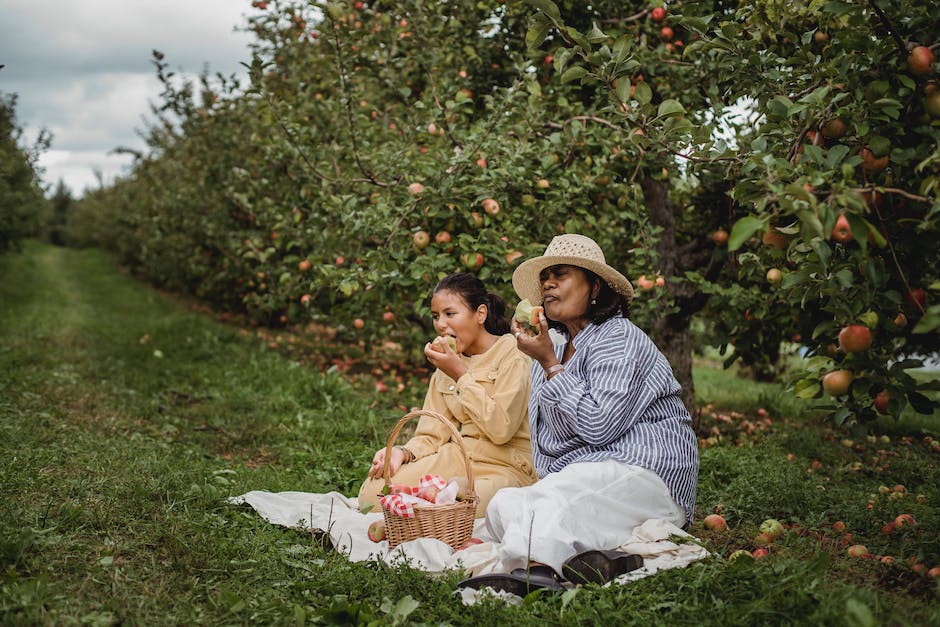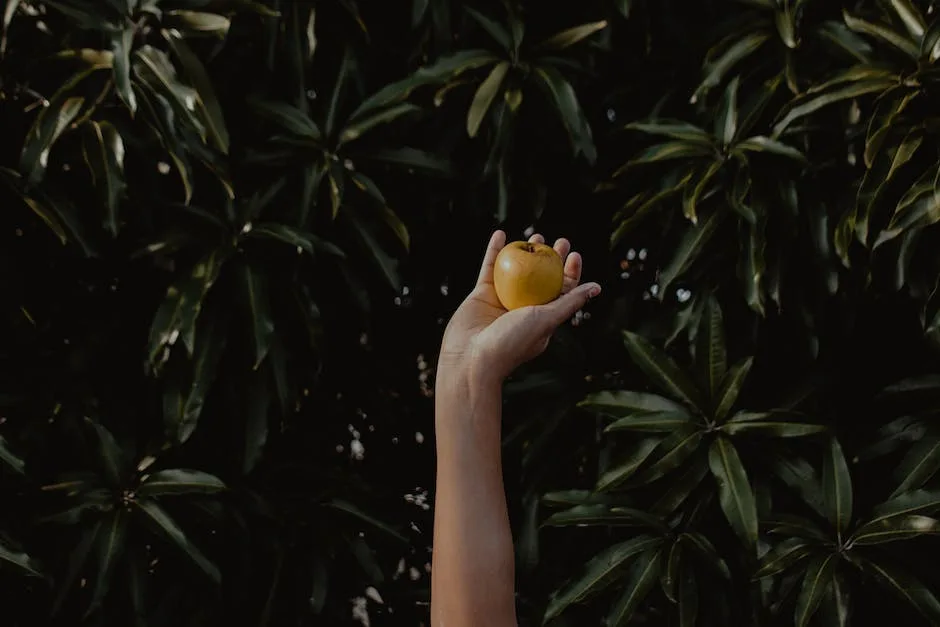pruning is a horticultural and silvicultural practice involving the selective removal of certain parts of a plant, such as branches, buds, or roots.
The newly exposed surfaces of an over-pruned apple tree are vulnerable to sun scalding, so the tree should be watered well and the exposed areas should be protected with whitewash or tree wrap.
What happens if you prune a tree too much?
If you cut too much off of a tree, you may unintentionally harm or kill it. This is because a tree’s foliage is important for protecting it against excessive sun exposure, and over pruning and topping can permanently disfigure your trees. Furthermore, cutting too much can also result in nutritional deficiencies or weak branches that are susceptible to wind damage, disease, or insect infestations. Therefore, it’s important to be cautious when trimming your trees, and to only remove as much as necessary.
Pruning is an important part of keeping your apple tree healthy and productive. Pruning in late winter or early spring helps to ensure that your tree will have strong, new growth that is less susceptible to damage from insects or winter weather. If you must prune during the summer or fall, be careful not to stimulate new growth that may be vulnerable to pests or cold damage.
Can I cut the top off my apple tree
Topping is bad for any tree, including fruit trees. The suckers that shoot back up from a topped fruit tree are not only ugly, but they produce leaves instead of fruit. Old trees can be invigorated by heavy pruning to produce new wood and spur systems. There may be a temporary drop in fruit production.
There’s a rule many professionals trim by: prune only ⅓ of the good wood. Less than that won’t accomplish much, and more than that can stunt its growth or worse.
What are the signs of over pruning?
When a tree has been over pruned, it can be difficult to see new growth during the spring. In the winter, more branches may break as a result of the heavy loads. Lack of foliage and large numbers of wounds can make your tree vulnerable to pests and disease. Over pruning can kill your tree over time.
If you’ve over-pruned your tree, don’t despair! With a little patience, your tree should be able to bounce back. However, it may take a year or two for new growth to appear. In the meantime, enjoy your newly pruned tree and be patient!
How far can you prune an apple tree?
When pruning a tree, it is important to only remove up to 25% of the canopy in any one year. If more needs to be removed, save the rest for subsequent years. Trees respond to excessive pruning by producing lots of upright, vigorous watershoots that will simply overcrowd the crown again.
Summer pruning of apples and pears allows sunlight to ripen the fruit and ensures good cropping the following year. This is the main method of pruning for restricted forms such as cordons, espaliers, fans and pyramids.
How do you aggressively prune an apple tree
Apple trees can become overgrown and difficult to manage if they are not pruned on a regular basis. Pruning helps to promote fruiting and ensures that the tree remains a manageable size.
When pruning an overgrown apple tree, the first step is to remove all dead wood. This can be done by simply cutting away any branches that are no longer alive. Next, suckers should be removed from the base of the tree. These are fast-growing shoots that can compete with the tree’s main branches for resources.
Once the dead wood and suckers have been removed, the next step is to choose six of the best remaining branches to keep as scaffold branches. Scaffold branches are the main support branches of the tree and should be evenly spaced around the trunk. All other branches should be cut away.
Finally, the branches on each scaffold branch should be thinned. This helps to increase air circulation and sunlight penetration, which can promote fruit production.
Severe pruning should only be done when absolutely necessary, as it can be very damaging to the tree. When pruning, always try to maintain the tree’s natural shape and appearance as much as possible.
How much can you trim a tree without killing it?
If you prune a tree incorrectly or too often, you can stress the tree and cause it to die. Pruning more than 25% of the canopy at one time is too much and can be very stressful for the tree.
The 1/3 rule is a moderate pruning practice that involves cutting about 1/3 of wood during any pruning activity. This balanced approach to thinning out shrubs stimulates new growth. The plant loses a good amount of stems, usually on the top section, allowing more light and air to enter the inside of the plant.
How do you fix a badly pruned tree
When pruning conifers, it is best to tape a branch from just below the pruning wound so that it stands vertically. This will help the branch to grow straight up naturally and serve as the leader. For deciduous trees, select one of the new leaders and cut back any competition.
If you are removing branches from a large tree, you should only remove 10 to 20 percent of the total branches. This will help the tree to stay healthy and strong. For smaller ornamental landscape trees and fruit trees, you can remove smaller branches between ¼ to ½ inch thick.
What happens if I prune a tree in summer?
Pruning during the summer helps to prevent diseases from developing in fruit trees, as well as promoting robust and durable branch development. This will ensure that the tree produces healthy fruit in the future. Trees that are particularly susceptible to disease if pruned during the rainy season include apricots and cherries.
Time really is the only cure for over pruning. When you remove more than one-third of the canopy at a time, the plant is stressed and may become brittle and more susceptible to damage.
How do you prune an over pruned apple tree
The best time to prune your apple trees is in late winter or early spring. You should cut back new shoots that are more than 20cm long, to three leaves above the basal leaves. You should also reduce any new shoots from existing side shoots to one leaf above the basal leaves. And finally, you should remove any growth that is spoiling the shape of your tree, particularly vertical growth, cutting it close to the parent branch.
Pruning is a critical process for trees and shrubs; it helps them to stay healthy and look their best. However, if not done correctly, pruning can actually do more harm than good. That’s why it’s important to learn how to make proper pruning cuts.
A proper pruning cut should be made just outside the branch collar (the swollen area where the branch attaches to the trunk). The cut should be made at a slight angle, away from the trunk, and should be just large enough to remove the entire branch. This type of cut allows the tree to heal quickly and minimizes the potential for disease.
In contrast, an improper pruning cut, such as a flush cut or a stub cut, can damage the tree beyond repair. A flush cut is made too close to the trunk, while a stub cut is made too far from the trunk. Both of these types of cuts can cause the tree to produce new growth that is weak and structurally unsound. In some cases, an improper pruning cut can even kill the tree.
When in doubt, it’s always best to err on the side of caution and consult with a certified arborist before making any cuts.
Can I cut the bottom branches off apple tree
Apple trees require a certain amount of light to produce fruit, and these downward-growing branches can obstruct this light. In addition, they can provide hiding places for pests and diseases. For these reasons, it is generally recommended to remove any downward-growing branches from apple trees.
Apple trees should have a pyramidal and conical shape, with shorter branches at the top so that they can allow sunlight to reach the lower branches. Additionally, apple trees should be pruned with a central leader form, with one central branch growing vertically from the trunk. This will allow the tree to produce fruit more efficiently, as well as improve the overall appearance of the tree.
Can I trim apple trees in September
Apple trees can be pruned at any time of year without harming them, although late winter – just before spring – is probably the best time to do it. By pruning at this time of year, you can avoid exposing the fresh cuts to severe icing, but you’ll still be able to influence the tree’s spring growth.
print(“It should be done while the tree is dormant, after leaf fall and before it starts growing again (bud burst), which is usually between November and early March.”)
What branches do you prune on an apple tree
Pruning is important for the health of your tree and should be done regularly. You should aim to remove weak, diseased, injured, or narrow-angle branches. Additionally, remove the weaker of any crossing or interfering branches, and one branch of forked limbs. Lastly, remove upright branches and any that sweep back inward toward the center of the tree.
If you have a tree that is in need of some major pruning, it is best to do it gradually over the course of a couple of years. This will avoid shocking the tree and causing damage from sunscald. Remove broken branches and branches that are rubbing one another first. Then, gradually remove inward facing branches, being careful not to remove more than 25% of the tree’s wood in any one pruning session.
Final Words
Pruning apple trees is a vital step in maintaining a healthy and productive tree. However, over-pruning can damage the tree and reduce its fruit production. Over-pruning can also make the tree more susceptible to disease and pests.
When you over prune an apple tree, you are essentially damaging the tree. This is because you are removing too much of the tree, and this can cause the tree to become stunted or deformed. Additionally, over pruning can also lead to the production of fewer apples.
Jackson Hill is a passionate arborist with years of experience in the field of trees. He developed his fascination with trees at a young age, spending countless hours exploring the forests and climbing trees. Jackson went on to study arboriculture and horticulture at Michigan State University and later earned a degree in forestry from the University of Michigan.
With his extensive knowledge and expertise, Jackson has become a trusted authority on trees and their impact on the environment. His work has helped shape the field of arboriculture and he continues to be a leading voice in the industry.
